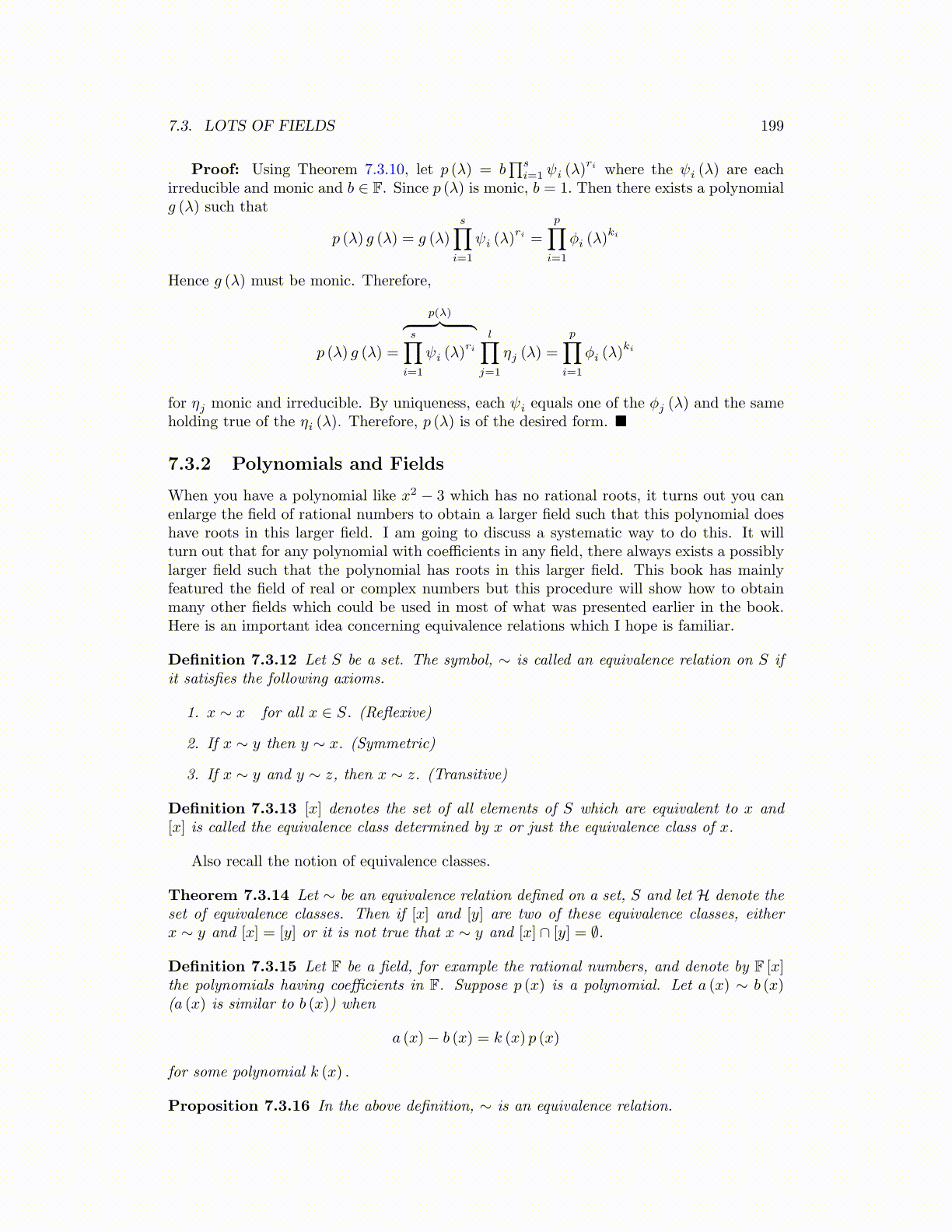
7.3. LOTS OF FIELDS 199
Proof: Using Theorem 7.3.10, let p (λ) = b∏s
i=1 ψi (λ)ri where the ψi (λ) are each
irreducible and monic and b ∈ F. Since p (λ) is monic, b = 1. Then there exists a polynomialg (λ) such that
p (λ) g (λ) = g (λ)
s∏i=1
ψi (λ)ri =
p∏i=1
ϕi (λ)ki
Hence g (λ) must be monic. Therefore,
p (λ) g (λ) =
p(λ)︷ ︸︸ ︷s∏
i=1
ψi (λ)ri
l∏j=1
ηj (λ) =
p∏i=1
ϕi (λ)ki
for ηj monic and irreducible. By uniqueness, each ψi equals one of the ϕj (λ) and the sameholding true of the ηi (λ). Therefore, p (λ) is of the desired form. ■
7.3.2 Polynomials and Fields
When you have a polynomial like x2 − 3 which has no rational roots, it turns out you canenlarge the field of rational numbers to obtain a larger field such that this polynomial doeshave roots in this larger field. I am going to discuss a systematic way to do this. It willturn out that for any polynomial with coefficients in any field, there always exists a possiblylarger field such that the polynomial has roots in this larger field. This book has mainlyfeatured the field of real or complex numbers but this procedure will show how to obtainmany other fields which could be used in most of what was presented earlier in the book.Here is an important idea concerning equivalence relations which I hope is familiar.
Definition 7.3.12 Let S be a set. The symbol, ∼ is called an equivalence relation on S ifit satisfies the following axioms.
1. x ∼ x for all x ∈ S. (Reflexive)
2. If x ∼ y then y ∼ x. (Symmetric)
3. If x ∼ y and y ∼ z, then x ∼ z. (Transitive)
Definition 7.3.13 [x] denotes the set of all elements of S which are equivalent to x and[x] is called the equivalence class determined by x or just the equivalence class of x.
Also recall the notion of equivalence classes.
Theorem 7.3.14 Let ∼ be an equivalence relation defined on a set, S and let H denote theset of equivalence classes. Then if [x] and [y] are two of these equivalence classes, eitherx ∼ y and [x] = [y] or it is not true that x ∼ y and [x] ∩ [y] = ∅.
Definition 7.3.15 Let F be a field, for example the rational numbers, and denote by F [x]the polynomials having coefficients in F. Suppose p (x) is a polynomial. Let a (x) ∼ b (x)(a (x) is similar to b (x)) when
a (x)− b (x) = k (x) p (x)
for some polynomial k (x) .
Proposition 7.3.16 In the above definition, ∼ is an equivalence relation.